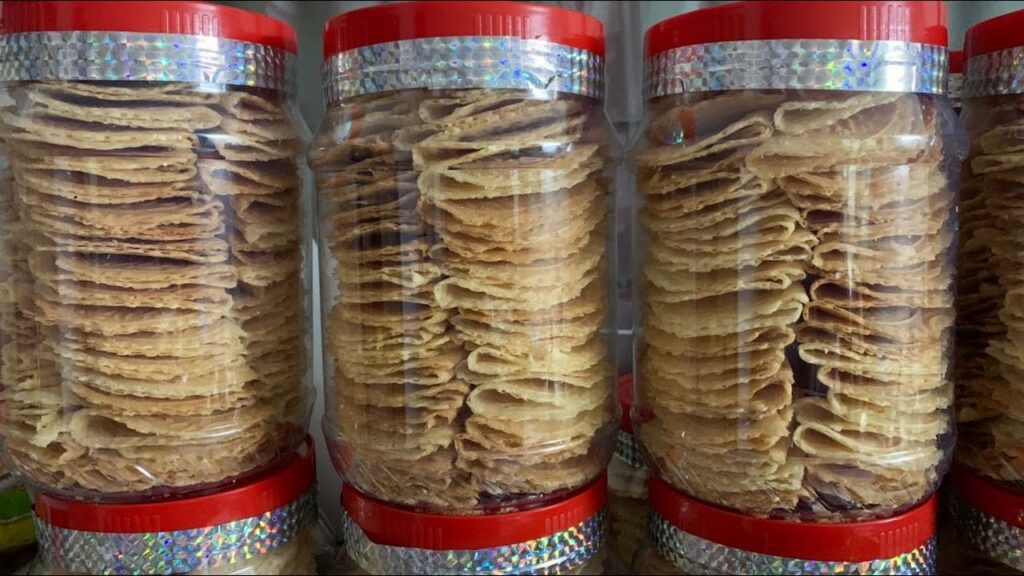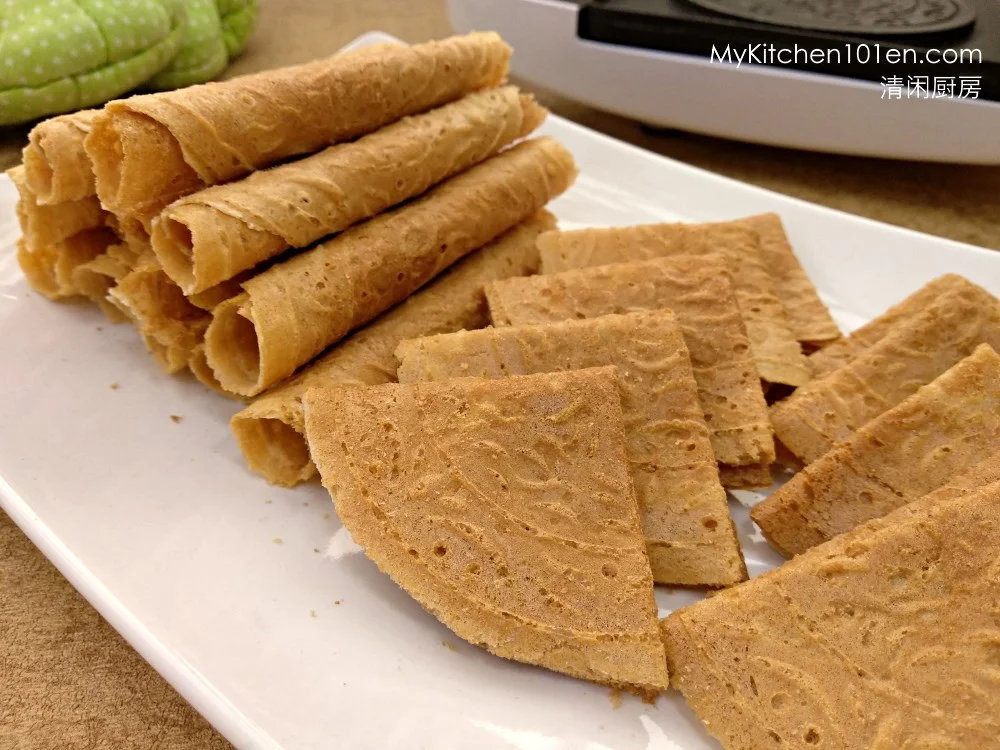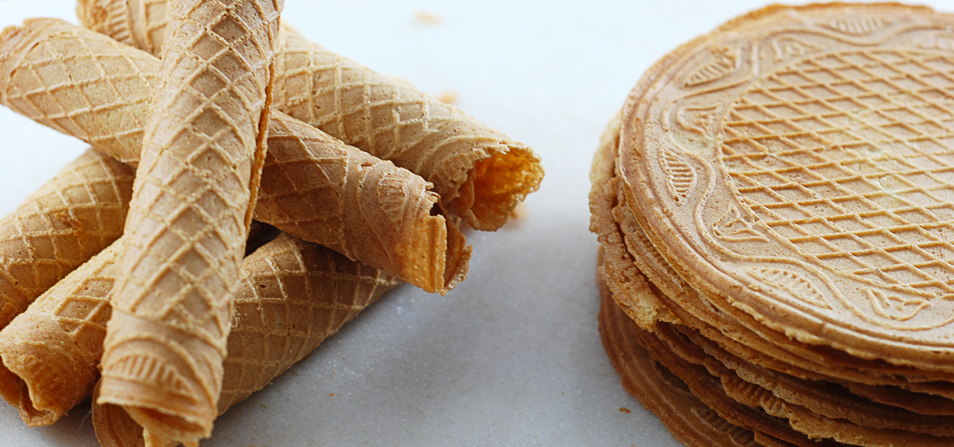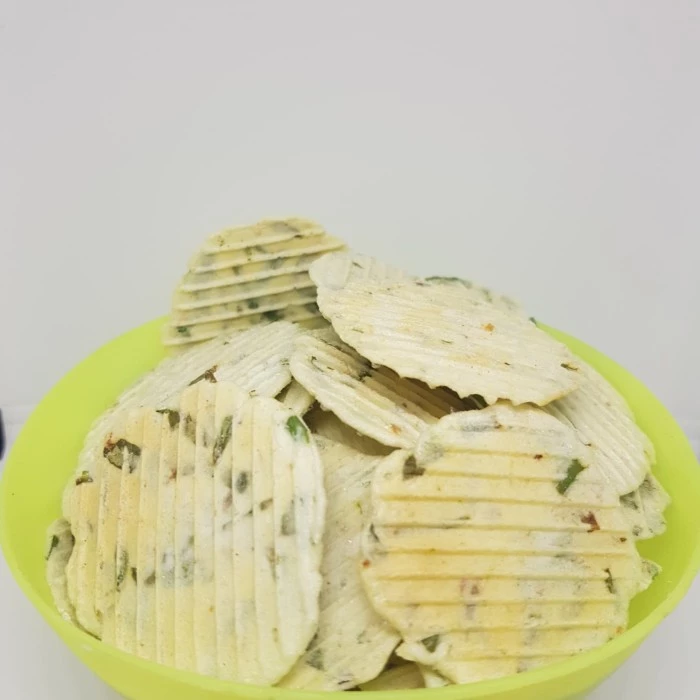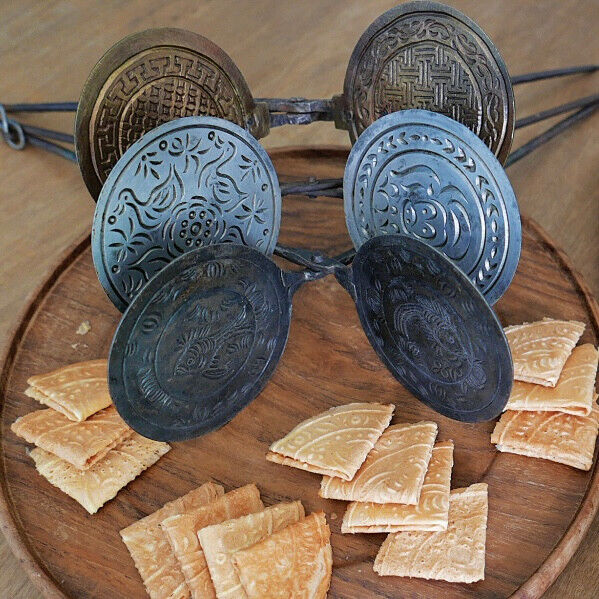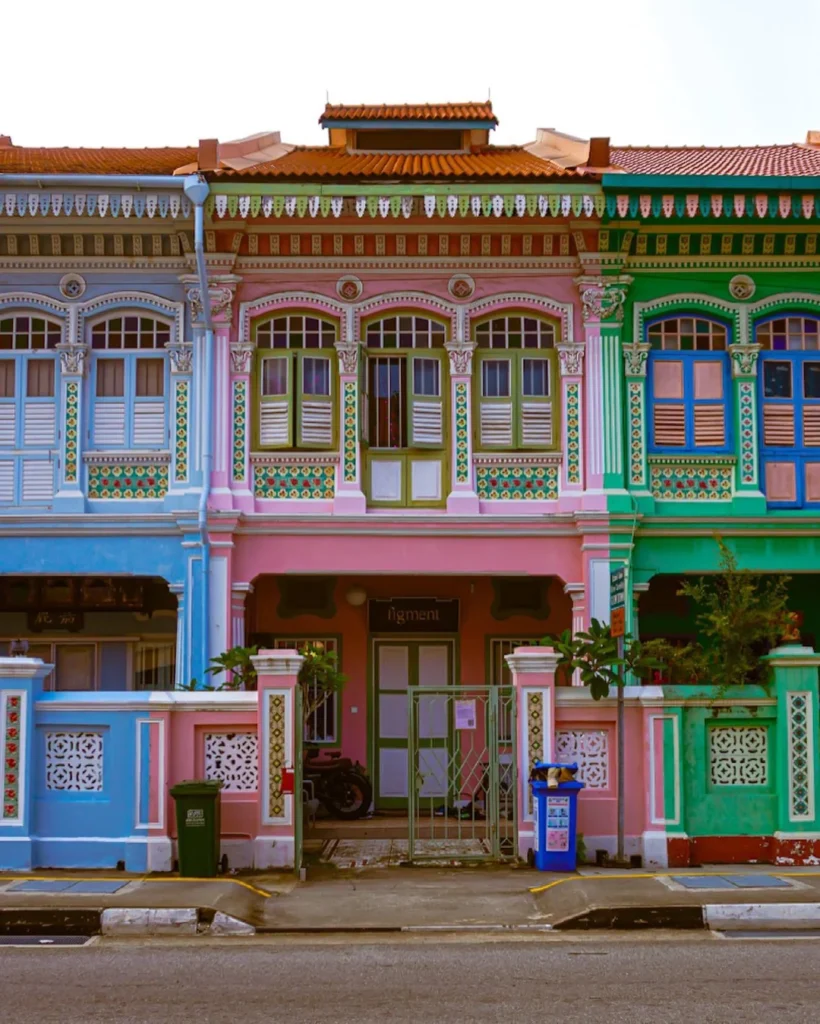Love Letters and Archipelago Wafer Making
How Dutch Colonialism Left Its Mark on Southeast Asia’s Favorite Wafers and Waffles
Fact File
Name:
Origin:
Popular in:
Complexity:
Flavor Profile:
Notable Ingredients:
Kuih gapit and kuih kapit/sepit/love letters and more!
Evolved from Dutch wafers in Java and Melaka and other Peranakan communities
Across the archipelago, especially in Java and Melaka
Labor intensive!
Lightly sweet
Coconut milk, eggs, rice flour
Love Letters and Archipelago Wafer Making
Across the Malaysia-Indonesia archipelago, you will find a variety of traditional wafers and waffles such as kuih Kapit and kue Gapit. These popular snacks are one of the few examples of Dutch colonialism in our culinary world, and naturally, they come in a variety of names, shapes and styles! To learn about more snacks inspired by the west, check out our other articles here.
Kue Gapit, a favorite in West Java, is a waffle shaped biscuit, similar in appearance to snacks in modern day Netherlands and Belgium. Additionally, you have kuih Kapit (kuih clamped), kue Sepit (kue clip), kue Semprong (kue tube), kue Belanda (kue Holland) – which all refer to the same thing – love letters! Love letters are more well known than kue Gapit as it is widely eaten across the archipelago, especially during Chinese New Year. They are thin crispy wafers that can be rolled and folded into different shapes. Growing up, we would often find them in giant plastic jars, filled to the brim in with iconic red lids, and you find yourself with a new jar to use at home when they are all eaten. Love letters are a staple in Chinese and Peranaken households.
These snacks did not exist in South East Asia before colonialism. That is because they are made using typical ingredients and baking methods found in Europe. Typical European waffle recipes would include the classic oil, eggs, sugar, milk and white flour combination to form a batter before being poured into a waffle iron to produce a typical waffle. The Dutch played the largest role in bringing this style of baking to the archipelago due to severe exploiting and complete colonization of Indonesia and Melaka. Although the Portuguese and the British had their share of colonizing and pillaging the region too.
There are lots of thin waffle biscuits resembling kuih kapit across Europe such as knipertjes in the Netherlands and barquillo in Spain which looks visually similar to love letters but are thicker and sometimes filled. Similarly, kue gapit resembles the Belgian natuurboterwafels. So really, it is hard to set a true ‘origin’ location and date for this delicacy since it has kept evolving from European cuisine to South East Asian cuisine. At what point does a Dutch snack become a truly Malaysian or Indonesian dish? What likely happened was cooks in Melaka and Java were trying to replicate the Dutch/European waffle snacks that they would bring with them. This is still a common practice across the world with, for example, Asian supermarkets in the West selling bubble tea drinks for the westerners to invent their own, completely unauthentic version to suit their pallets. The difference being in the 17th century Indoensians and Malaysians were transforming the dishes to incorporate local flavors such as coconut milk and rice flour and not just dumb down any unknown flavors they encounter.
Something interesting to note is that despite their popularity everywhere, they are specifically loved in Melaka and Java, two areas that were heavily influenced by the Dutch, playing major roles as part of the Dutch East Indies. Melaka was captured by the Dutch in 1641 and was a historic trade hub, controlling the shortest shipping route from the Indian Ocean to the South China Sea. Java is home to Jakarta (modern day Batavia) which was the capital of the Dutch East Indies and moved trade away from Melaka and brought it all to Batavia, ending Melaka’s dwindling importance in global trade, initiated by the 130-year Portuguese occupation of Melaka. In fact, the Dutch merely conquered Melaka to prevent any other European power from competing with them. It was a treacherous rule, the Dutch being remembered as one of the most inhumane colonial powers out of all. Ironically, they are also known to be the first ever corporation, its structure paving the way for the society we have today.
The massive prominence of the Dutch in Melaka and Java is why these kues are so prominent there. After such a long, invasive period under Dutch rule, cultural diffusion was bound to happen.
Kue Gapit
Cirebon is a port city in West Java where many Dutch traded, worked and lived throughout the colonial occupation. The kue gapit is just one of the vestiges of the Dutch colonial period in Cirebon. While they visually resemble European waffle biscuits, the inside is a complete makeover, with tons of flavor variations across Cirebon. The batter is made by mixing together eggs, granulated sugar, butter, tapioca flour (or rice flour), vanilla extract and water. This is the base, but many variations exist such as bawang, pandan, ubi ungu, balado, coklat and many more! Whether sweet or savory, if you crave it, you can make it. The iron used for cooking the batter is flat with a grid pattern on the inside. A few small pieces of the batter are placed in the iron at a time, closed and cooked. Once ready, the iron is opened and the gapit is scooped out, piping hot, ready to eat!
Not only is kue gapit a snack but it can also be used instead of kerupuk and accompany meals. It is great for soaking in flavors of a main dish! Kue gapit is such a great example of elevating foreign recipes to suit the local culinary world and it poses as a reminder of the depressing Dutch colonial power that once existed and adapting and moving on together.
Love Letters
Why the name ‘Love Letters”?
Some Authentic Recipes to Learn From
- For authentic Kue Gapit recipes check out Buyut Akrom on Youtube
- Kue Semprong recipe here!
- Kuih Kapit also here!
- Kuit Kapit – MalaysianchineseKitchen
- The city of Batavia in the island of java and capital of all the dutch factories settlements in the east indies – NUS
- When the World Came to Southeast Asia: Malacca and the Global Economy – Association for Asian Studies
- GAPIT CIREBON! Gurih Renyah Manjakan Lidah | I LOVE INDONESIA EPS. 21 ( 2/4 ) – Youtube
- resep kue kering gapit bawang super renyah – cemilan kue gapit khas cirebon – Youtube
- The meaning behind Chinese new year goodies from around the world – Michelin guide
read later – the low countries Why Indonesia Never Really Became Dutch, but Is Now Becoming Anglicised – the low countries
